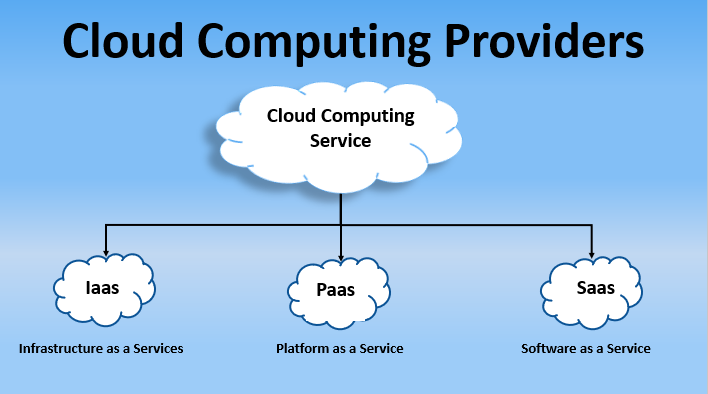LinkDaddy Cloud Services Press Release: Announcing New Quality and Enhancements
LinkDaddy Cloud Services Press Release: Announcing New Quality and Enhancements
Blog Article
Transform Your IT Framework With Cloud Provider
Embracing cloud solutions uses companies a myriad of benefits, from increased flexibility to enhanced partnership. The crucial lies in understanding just how cloud services can improve your organization's IT landscape and drive advancement.
Benefits of Cloud Solutions
Leveraging cloud solutions offers organizations a affordable and scalable service for handling their IT facilities. One of the key advantages of cloud solutions is the versatility they offer. Organizations can easily scale their resources up or down based upon their present requirements, enabling reliable source allotment. This scalability also allows businesses to rapidly adapt to changing market conditions without the need for considerable upfront investments in equipment or facilities.

Moreover, cloud services advertise partnership and remote job by providing workers with access to data and applications from anywhere with a web link. This availability raises performance and permits seamless cooperation among team members, no matter their physical area. Generally, the advantages of cloud services are large, making them an eye-catching option for companies wanting to improve their IT infrastructure.

Movement Methods
To efficiently change to shadow services, companies have to thoroughly perform and intend movement approaches that line up with their company goals and IT requirements. The very first step in this procedure is to conduct a detailed assessment of the existing IT facilities to identify which data and applications can be moved to the cloud. Organizations needs to prioritize work based upon elements such as safety and security demands, performance demands, and compliance regulations.
Once the evaluation is complete, companies can select the most appropriate movement strategy. This can consist of rehosting, refactoring, rearchitecting, or restoring applications for the cloud atmosphere. It's vital to take into consideration factors like complexity, time, and price restrictions when selecting the movement method.
Additionally, organizations must produce an in-depth migration plan that describes the timeline, resources, and responsibilities for every step of the movement procedure - linkdaddy cloud services press release. Normal screening and tracking are essential to guarantee a smooth change and lessen disruptions to business procedures. By adhering to these migration approaches, companies can unlock the complete potential of cloud services and drive technology within their IT framework
Safety And Security Factors To Consider
Making certain robust security measures is extremely important when integrating cloud services right into a company's IT facilities. The shift to the cloud brings distinct protection factors to consider that must be addressed to shield sensitive information and preserve functional integrity.
Additionally, applying solid accessibility controls is important. This involves defining individual permissions, verification methods, and checking accessibility to protect against unauthorized people from obtaining access to delicate sources. Normal protection audits and evaluations are important to recognize vulnerabilities and guarantee conformity with market guidelines.
In addition, organizations need to have a durable incident feedback strategy basics in position to swiftly address protection breaches or data concessions. This strategy needs to describe actions to include the incident, minimize damage, and restore normal procedures efficiently. By focusing on security considerations and executing proactive steps, organizations can confidently take advantage of cloud solutions while protecting their electronic assets.
Cost-Saving Tips
When streamlining IT infrastructure with cloud services, companies can enhance their budget through critical cost-saving ideas. One reliable means to save prices is by leveraging the pay-as-you-go design offered by numerous cloud solution suppliers - linkdaddy cloud services. This approach enables organizations to pay only for the resources they utilize, removing the demand to spend in pricey hardware or software program upfront. In addition, companies can reduce operational prices by minimizing the demand for on-site upkeep and support staff, as numerous cloud services use automated updates and assistance.
One more cost-saving idea is to meticulously monitor and readjust cloud usage to avoid unneeded expenses. By frequently assessing usage information and scaling resources up or down based on demand, companies can ensure they are not overspending on unused ability. Moreover, thinking about multi-cloud or hybrid cloud services can also lead to set you back savings by allowing organizations to select the most affordable services for every work.
Future Trends
The advancement of cloud services is shaping the future landscape of IT framework. As we look in advance, several essential fads are positioned to affect how companies leverage cloud services to enhance their IT procedures. One substantial fad is the raising adoption of multi-cloud approaches. Organizations are identifying the benefits of dispersing work throughout several cloud service providers to maximize performance, boost strength, and mitigate dangers connected with vendor lock-in.
An additional prominent pattern is the rise of side computing together with cloud services. Side computing brings handling closer to the data resource, reducing latency and enabling real-time data evaluation. This trend is see specifically important in industries such as Resources IoT, self-governing lorries, and health care, where prompt decision-making is important.
In addition, the assimilation of man-made knowledge (AI) and artificial intelligence (ML) abilities into cloud services is set to redefine how companies extract understandings from their information. AI-driven automation, predictive analytics, and personalized customer experiences are simply a few of the methods AI and ML are revolutionizing cloud solutions.
Conclusion
To conclude, cloud services offer many advantages for organizations aiming to change their IT infrastructure. By executing migration approaches customized to specific needs and focusing on safety factors to consider, companies can achieve price financial savings and enhanced efficiency. Embracing cloud solutions can cause a much more dexterous and competitive business landscape, enabling for greater flexibility to changing market problems and boosted cooperation amongst teams. As companies remain to utilize cloud options, they can stay ahead of future fads and drive technology in the digital age.

Ensuring durable safety actions is extremely important when incorporating cloud solutions into an organization's IT infrastructure.In final thought, cloud solutions provide many benefits for companies looking to change their IT infrastructure.
Report this page